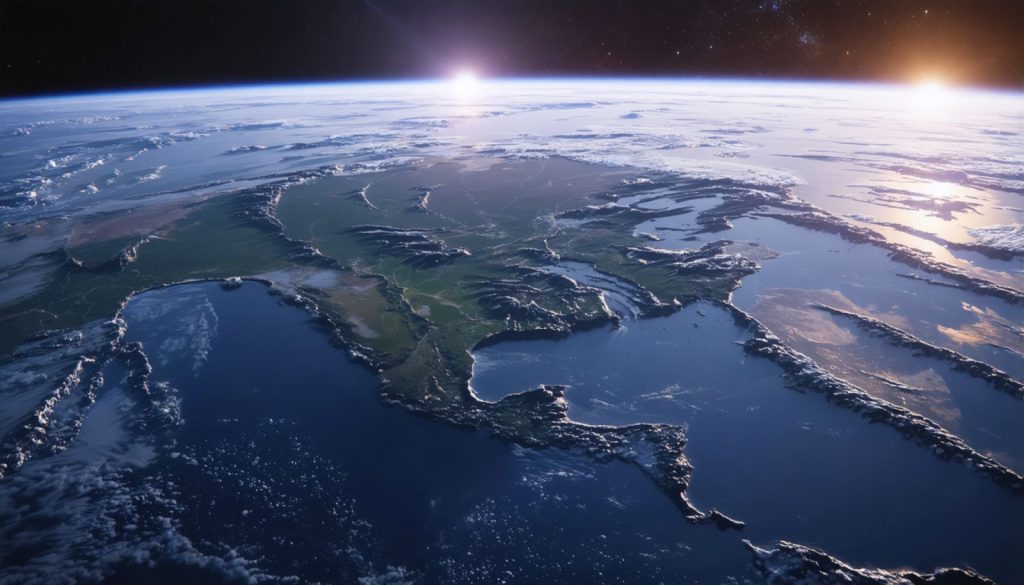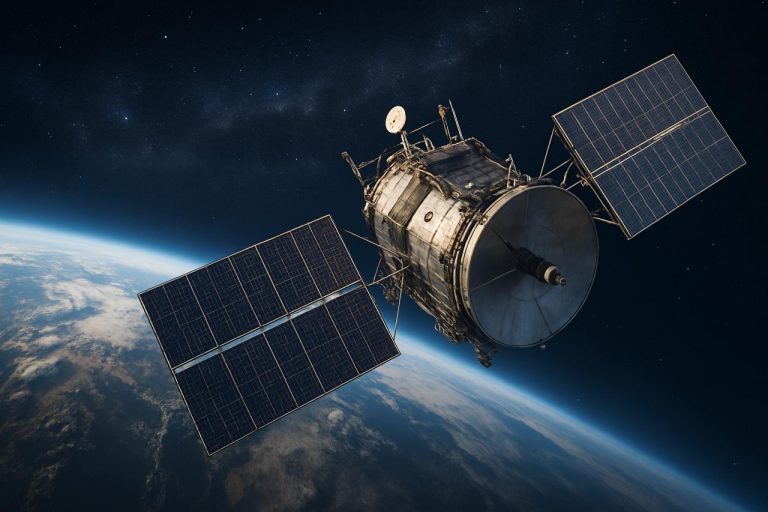
- The Fram2 mission, led by cryptocurrency mogul Chun Wang, explores Earth’s poles aboard SpaceX’s Dragon spacecraft.
- Launched from Kennedy Space Center, the mission features a diverse international crew, including a filmmaker and a robotics researcher.
- The mission aims to study human adaptability in space through 22 scientific experiments.
- Voyagers document their journey with stunning imagery shared on social media, capturing Earth’s beauty from space.
- Fram2 symbolizes the spirit of adventure and exploration, inspired by the historical Norwegian vessel of the same name.
- Elon Musk’s involvement highlights SpaceX’s continued commitment to space exploration.
- The mission underscores humanity’s shared connection and ambition, pushing the boundaries of exploration further.
- The Dragon capsule’s return will symbolize a significant achievement in cosmic exploration and human ingenuity.
As humanity stretches its curious gaze beyond the confines of our atmosphere, a group of trailblazing astronauts aboard SpaceX’s Dragon spacecraft are embarking on a daring journey that has mesmerized Earth’s dreamers and explorers alike. This week, the Fram2 mission, masterminded by cryptocurrency mogul Chun Wang, offers a radical new perspective by spiraling over both of Earth’s enigmatic poles.
Silver exhaust plumes marked the commencement of this odyssey as a SpaceX Falcon 9 rocket roared into the starlit sky from the Kennedy Space Center in Cape Canaveral. Seated inside were not only advanced instruments but also four inquisitive minds eager to unravel the secrets of our planet from a stellar view. With its payloads secure, the Dragon capsule disengaged and ventured forth, carried by its own thrusters into the silent void above.
Elon Musk, capturing our collective imagination yet again, shared glimpses of this remarkable voyage through his social media platform, X. From this digital porthole, tantalizing images flow—scenes straight from dreams entwined with reality. The visual symphony captured from the Dragon’s domed cupola presents an ethereal, snow-kissed world, echoing the sounds of serenity beneath the stars.
This mission, named after the storied Norwegian vessel Fram, encapsulates the spirit of adventure that lunges towards discovery. Paralleling its historical namesake, Fram2 navigates the celestial seas of space, where Wang—the mission’s architect—joins forces with Norwegian filmmaker Jannicke Mikkelsen, German robotics researcher Rabea Rogge, and Australian adventurer Eric Philips. United by a sense of wonder, they are not merely passengers; they are participants in a meticulously choreographed dance across the heavens.
Beyond the stirring beauty of the poles, the crew is plumbing the depths of human adaptability in space with a suite of 22 scientific experiments to demystify the impacts of weightlessness on the human body. This wealth of data promises to sculpt the contours of our understanding for potential voyages deep into the universe’s heart.
In this extraordinary cosmic ballet, SpaceX’s Fram2 mission manifests a singular truth: the view from above rekindles the terrestrial bond shared by all humanity. At 267 miles from the Earth’s embrace, a kaleidoscope of whiteness and wilderness unveils its poetry, reminding us of the profound beauty of our blue planet.
As the mission continues its pivotal course above Earth’s majestic poles, the Fram2 crew holds the power to rewrite the tales of exploration. Each orbit not only brings humanity closer to the stars but also draws our ambitions—deep rooted in the Earth’s soil—closer to fulfillment.
When their celestial trek concludes and the Dragon capsule gracefully descends into the Pacific, it will carry the echoes of a journey beyond exploration—a testament to human ingenuity and a reminder that the boundaries of our universe continue to extend gracefully, silently onward.
The Fram2 Mission: Embarking on Humanity’s Next Cosmic Chapter!
The latest SpaceX voyage, dubbed Fram2, is not just an expedition into space; it’s a weave of ambition, curiosity, and technology. As the astronauts aboard the Dragon spacecraft stretch their view over Earth’s poles, this mission unravels a spectrum of possibilities and offers a plethora of insights for the future of space exploration. Let’s dive into the underexplored facets of this mission, dissect the technology, and discuss the implications of such feats.
Revolutionary Fram2 Mission: Details You Must Know
1. How-To Conduct Experiments in Microgravity:
– Preparation: Each experiment undergoes rigorous testing on Earth, followed by simulations to anticipate zero-gravity challenges.
– Execution: In microgravity, astronauts employ unique tools and techniques to ensure accuracy, such as Velcro to stabilize equipment.
– Data Collection: High-definition imagery and real-time data transmission facilitate analysis by Earth-bound scientists.
2. Real-World Use Cases and Market Trends:
– Science and Medicine: The Fram2 mission’s study on human adaptability in space heralds future medical breakthroughs. Insights gathered could revolutionize treatments for osteoporosis and muscle degeneration.
– Commercial Space Travel: Fram2 synergizes with the growing trend of space tourism, delivering critical data to build safer and more cost-effective travel modules for private entities.
3. Space Exploration Reviews and Comparisons:
– Fram2 vs. Historical Missions: Drawing parallels with NASA’s Apollo missions, Fram2 showcases advanced robotics and international collaboration. Unlike prior missions focused purely on moon landings, Fram2 explores polar orbits, promising dynamic research potentials.
– Competitors: While initiatives by agencies like NASA focus on Mars colonization, SpaceX strategically prioritizes scalable, frequent telescope-style missions.
4. Pros & Cons of Space Exploration Missions:
– Pros: Pioneering technologies, international teamwork, extended knowledge on human physiology.
– Cons: High costs, potential for technical failures, and considerable environmental implications from launches.
5. Expert Insights and Predictions:
– Sustainability in Space Exploration: Eco-friendlier rocket technology is paramount, underscored by ongoing developments in reusable rocket components. SpaceX already showcases these with its Falcon 9 stages returning for refurbishment.
– Future Missions: As space technology evolves, next-gen missions might incorporate AI-driven spacecraft to manage tasks autonomously, further reducing risks and operational costs.
Actionable Recommendations
– For Space Enthusiasts: Stay informed by following missions like Fram2 to grasp the evolution of space travel and its profound implications for the future of humanity.
– Investors: Explore opportunities in aerospace tech firms. The commercialization of space travel is gaining momentum, signaling promising investments.
– Educators: Leverage space missions to inspire students in STEM fields, emphasizing the practical applications of physics, biology, and robotics.
Staying Safe and Connected
In the frontier of space exploration, safety and sustainability are as critical as the pursuit of knowledge. SpaceX sets the stage for future cosmic endeavours, continually refining their tech to align with eco-conscious goals.
Want to learn more about SpaceX and contribute to the exploration of the universe? Check out the official SpaceX website.
Such missions are rewriting the capabilities and aspirations of what humans can achieve, accentuating our desire for discovery, unity, and the transcending of earthly confines. As we push these cosmic boundaries, each milestone acts as a building block for a flourishing legacy of human potential amidst the stars.



